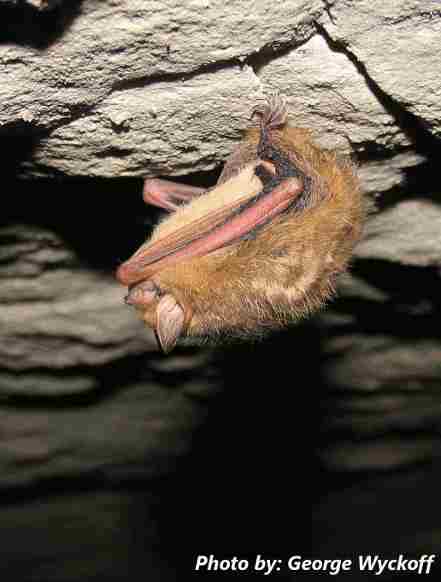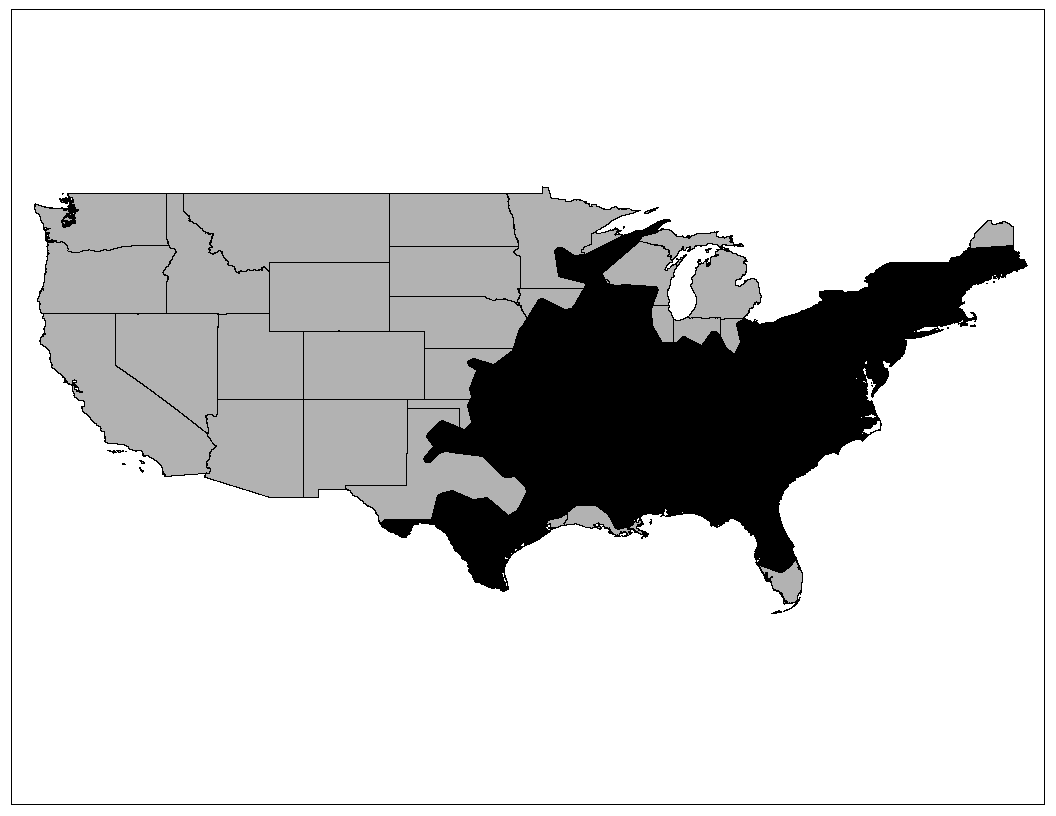 Tri-colored Bat
Tri-colored Bat
- Scientific Name: Perimyotis subflavus
- Weight: 5-8 grams
- Wingspan: 21-26centimeters
- Distribution: Most of the eastern United States, southeastern Canada, and southward through eastern Mexico to Central America.
- Ecology and Behavior: Caves, mines, and rock crevices are used as hibernation sites in winter and as night roosts in summer. These bats rarely occur in buildings and apparently most roost in trees during the summer. They inhabit more caves in eastern North America than any other species of bat, usually hanging singly in warmer parts of the cave. An individual may occupy a precise spot in a cave on consecutive winters; it usually has several spots in which it hangs, shifting from one to the other during the winter. This bat emerges from its daytime retreat early in the evening. It is a weak flier and so small that it may be mistaken for a large moth. Tri-colored bats usually appear to be solitary, although occasionally in late summer four or five will appear about a single tree.
- Food Habits: Often forages over waterways and forest edges. It eats moths, beetles, mosquitoes, midges, bugs, ants, and other insect.
- Reproduction: Mating occurs in autumn, sperm are stored during winter,
and fertilization takes place in early spring. These bats usually bear twins in
late spring or early summer. The young are born hairless and pink with eyes closed,
and they are capable of making clicking sounds that may aid their mothers in locating
them. They grow rapidly and can fly within a month.

- Status of Populations: One of the most common bats over most of its range.
- Range:


The presence of species in particular counties is based on both summer and winter occurrence records compiled by the TNBWG, an unshaded county does not represent the absence of a particular species from that county, only the lack of an occurrence record. These maps are intended for educational and general information purposes only and are not intended for use in consultation with US Fish and Wildlife Service (USFWS) or any other state or federal agencies. Project proponents should contact USFWS and the Tennessee Wildlife Resources Agency for the most up to date ranges for bat species in Tennessee.
Range Map Data Sources
National bat ranges - Layer downloaded from nationalatlas.gov. The data were compiled by Bat Conservation International using data from state natural heritage programs, published literature, unpublished reports, museum collections, and personal communications from university, Federal, State, and local biologists.
TN county occurrence data - TWRA Scientific Collection Permit data compiled from 2000-2013, TWRA Wildlife Diversity database, published literature [Graves and Harvey 1974. (Journal of the Tennessee Academy of Sciences 49:106-109)], personal communications from university, Federal, State, local biologists, and TNBWG members.